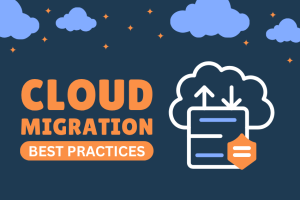Recent findings from Salesforce reveal that a typical customer contact database consists of 90% incomplete contacts, with 20% of the entries rendered useless due to various factors. Notably, around 74% of these records are outdated and require updating, while approximately 25% are duplicates.
Databases with outdated, duplicate, and missing information have been a significant concern for many businesses. Without accurate and up-to-date information, sales teams struggle to acquire new customers effectively.
Addressing these data quality issues is crucial as outdated information not only leads to missed sales opportunities but also leads to stagnant revenue or ROI.
All these challenges can be proactively resolved with widely adopted CRM systems like Salesforce. However, as new customer data continually emerges, even a robust CRM like Salesforce needs data enrichment.
Understanding Salesforce Data Enrichment- The Key to Resolving Data Quality Issues
Salesforce data enrichment is the process of enriching existing data stored in a business’s CRM (Customer Relationship Management) system. It involves analyzing current data, checking for errors, identifying missing gaps, adding missing information, and validating and verifying data across internal and external sources.
Enrichment often involves updating current records with more comprehensive and accurate information, such as demographics, firmographics, behavioral details, or contact details. The type of data points or details enriched usually depends on the nature of the business.
For example, in B2B Salesforce data enrichment, the main agenda is to gather information and gain in-depth insights into businesses, their key decision makers, company size, technographics, revenue, organizational hierarchy, and other relevant aspects.
In contrast, in B2C Salesforce data enrichment, the main agenda is to understand customers and their product or service preferences. It involves appending customer profiles with details like their demographics, purchasing behavior, or social media interactions.
Within both business models, customer data enrichment assists in boosting sales by:
-
Improving Data Accuracy
Data enrichment aids in discovering and rectifying errors within existing databases, like outdated contact numbers or invalid email addresses. This ensures that businesses access up-to-date and accurate information, leading to maximum ROI with minimal sales efforts.
-
Enhancing Data Completeness
Data enrichment involves identifying missing information within existing databases and supplementing them with additional relevant data points. Addressing these gaps and continuously enriching the dataset with accurate and comprehensive information about what customers buy and like ensures data completeness.
-
Ensuring Data Consistency
Customer data enrichment maintains data consistency by ensuring that all customer information is coherent and aligned, regardless of where it originates or how it is collected. This includes ensuring that data fields are standardized, free from errors or duplicates, and updated regularly to reflect the most recent information.
-
Structuring Data
Customer data enrichment employs methods to sort through messy, unorganized data, making it easier to understand and use. It helps identify different types of information within unstructured data like names, addresses, phone numbers, email addresses, and purchase dates, organizes them neatly, and paves the way for easy analysis and accurate decision-making.
-
Enabling Data Segmentation
Enriched customer data enables more precise segmentation and targeting strategies. By incorporating a broader range of customer attributes and preferences, businesses can create more granular segments. This allows for more tailored marketing campaigns and sales efforts, increasing the likelihood of conversions.
-
Fueling Predictive Analytics
Periodically enriched data forms the base for predictive analytics. Businesses can identify potential customers, personalize product recommendations, and predict churn. This foresight helps sales and marketing teams to redirect their focus towards the right goals and maximize sales.
How Does B2B Salesforce Data Enrichment Enhance Sales?
1. It Helps Sales Teams in Personalizing Outreach
With Salesforce data enrichment, you can gather detailed information about your clients, such as their purchasing history, recent inquiries, service preferences, and current business challenges or requirements. You can leverage this information to craft messages showcasing how your offerings can resolve their problems, demonstrating a genuine understanding of their needs.
For instance, a company selling project management software to marketing agencies enriches its Salesforce data. The company detects that some clients in its target industry are struggling with task delegation while others are facing campaign tracking challenges. The company can then tailor its email messages, highlighting how its software can solve those unique challenges, resulting in higher conversion rates.
2. It Helps Sales Teams in Lead Qualification and Segmentation
Data enrichment boosts sales by revealing additional information and helping you find and target the most promising leads. The additional information may include the company’s size, annual revenue, industry sector, and so on.
You can discover what technologies the prospect uses and the emerging ones they aim to leverage, ultimately giving you a complete picture of whether your existing products or services can integrate well with their systems. Through this data, you can amplify your outreach efforts accordingly towards the ones with the highest conversion potential.
For instance, a company that sells cybersecurity solutions enriches their Salesforce data and detects leads in particular industries that are high-growth and are more vulnerable to cyberattacks. Based on this information, they can segment the leads by company size, tailor their outreach messages accordingly, and focus on large enterprises with more robust security needs.
3. It Assists Businesses in Optimizing the Sales Process
Enriched data assists you to streamline your overall sales process. With an in-depth understanding of your customers and leads, you can tailor your sales strategies, content, and presentations to address their specific challenges and needs. This reduces time consumed in closing deals and helps improve your company’s overall sales efficiency.
For instance, a human resources software company enriches its Salesforce data to gain a deeper understanding of the unique hiring difficulties that different companies in their target market encounter. They then craft sales presentations that highlight how their software directly tackles these enterprise hiring challenges, which ultimately helps them make more precise sales strategies and meet their targets effectively.
Challenges Businesses Face during Salesforce Data Enrichment
-
Maintaining Data Accuracy and Completeness
A primary challenge that arises during Salesforce data enrichment is ensuring that the existing information is accurate and complete. The existing data might contain outdated details or duplicate entries which require proper verification so that the enrichment process is built on a credible foundation. Businesses usually find it difficult to validate the existing data and remove such inaccuracies, which may lead to ineffective sales strategies, missed opportunities, or misguided marketing efforts.
-
Ensuring Scalability of Data Enrichment Processes
As businesses expand and the volume of data grows, comes the challenge of scalability. Efficiently enriching huge amounts of data within Salesforce can be overwhelming. Companies experiencing growth may find it tough to scale their data enrichment processes to match the expanding customer databases.
-
Executing Multilingual Salesforce Data Entry
Businesses often find themselves facing difficulties with multilingual data entry due to various reasons. Managing a global reach demands a nuanced approach to Salesforce data entry, particularly when dealing with customers across diverse regions and languages.
Ensuring accurate data entry in multiple languages, such as Chinese, Japanese, German, Spanish, and more, presents a significant challenge. Having a team of multilingual data entry experts who can input information into Salesforce while maintaining consistency and precision across languages can be daunting. Moreover, dealing with such language-specific differences while ensuring data stays accurate makes the task even more complicated.
-
Managing Budget/Overheads
Enhancing data within Salesforce comes with expenses such as licensing fees to enable data enrichment services, training staff and allocating resources for data cleansing and upkeep. Startups or small businesses with limited resources might struggle to afford such comprehensive data enrichment solutions.
-
Maintaining Data Quality over Time
Data decays over time due to various factors, such as changes in customer information, outdated records, and evolving market trends. Without regular enrichment, the data becomes less reliable and valuable for business operations. Consistently upkeeping the quality of data within Salesforce demands attention and dedicated resources.
-
Focussing on Data Security
At times, businesses want their Salesforce data to remain within the platform, especially if it contains sensitive or confidential information. This poses a challenge during data enrichment as it is difficult to implement the process while ensuring the security of the information. It necessitates taking extra precautions and implementing appropriate measures to safeguard the data throughout the enrichment process without compromising its integrity or confidentiality.
Best Practices for Salesforce Data Enrichment
Continuous customer data enrichment is vital for businesses to derive actionable insights and foster meaningful customer relationships. However, overcoming the above-mentioned data enrichment challenges is essential to ensure that the appended information adds value rather than worsening any existing issues in your database structure. Here are a few best practices that will help you do so.
1. Use Automation and AI to Speed Up Data Enrichment
Use automation and AI tools to make your Salesforce data enrichment process faster and more efficient. By automating time-consuming tasks such as data entry, you can ensure swift and accurate data input within your CRM. With the help of AI algorithms, you can cleanse and standardize the incoming data.
As these tools require minimal supervision, you can set up data enrichment schedules where the AI algorithms detect missing or outdated information and automatically enrich the records with new information.
Leveraging automated tools and technologies helps your sales team access additional information with ease while they can focus on building more efficient sales cycles to increase revenue.
2. Cross-Reference and Validate Salesforce Data
Engaging with the right customers can significantly increase conversion chances. Cross-reference customer data by checking and matching it against relevant external data sources.
These sources can include industry databases for business details, social media platforms for current contact information, or government registries for business verification.
For instance, you have a customer profile in your Salesforce named ‘Olivia Smith.’ You can cross-reference their contact details by visiting their LinkedIn profile to ensure the information matches.
Validate the information in your Salesforce CRM to ensure correctness and consistency. Double-check the information within your Salesforce data against other relevant fields.
For example, verify if an email address format matches the company domain or if a phone number matches the designated area code. Identify and flag inconsistencies for further action.
These practices enhance the reliability of your database and ensure that your sales efforts are directed toward the right people.
3. Continuously Monitor and Improve Salesforce Data Enrichment Processes
Measure the effectiveness of your data enrichment processes through KPIs. Focus on monitoring the enrichment coverage, data accuracy rates, and time-to-enrichment to improve your data appending process wherever it is lacking.
Take feedback from internal and external stakeholders directly associated with your Salesforce data. Solicit input from CRM users in your business to understand their experience, find pain points, and know where the enriched data is helping them.
Make relevant adjustments to align the process with their day-to-day data requirements. Seek feedback from stakeholders like data analysts who provide valuable insight into the effectiveness of enriched sales data. Prioritize enhancements in your process based on their feedback.
These feedback loops and KPIs help your business optimize the data enrichment process, facilitating better customer relationships, enhanced sales performance, and sustainable revenue growth.
4. Outsource Data Enrichment Tasks for Measurable Outcomes
While Salesforce data enrichment is integral for businesses to achieve a competitive advantage, it presents numerous challenges, from managing vast volumes of data to ensuring its reliability, accuracy, and relevance.
Partnering with a third-party team helps you relieve your in-house personnel from working on customer data enrichment tasks. It lets them focus on critical revenue-generating activities such as following up with targeted clients and closing deals.
Experts append your Salesforce data with real-time information for more impactful sales strategies and higher conversion rates.
For instance, a leading company in the water technology sector was facing significant challenges in managing its customer data. Their CRM data had become stagnant, filled with outdated and incomplete entries, hindering their marketing efforts and slowing down sales processes.
The company chose to partner with a third-party service provider to enrich their Salesforce data. Within three months of this partnership, the company experienced a 39% increase in email delivery rates. Moreover, with clean and accurate data, their sales soared by an impressive 52%.
To Conclude
If your business is leveraging the Salesforce CRM system for housing customer data, enrichment of this data is not just an option but a necessity. Selecting the most effective approach to enrich customer data will enable you to discover new sales opportunities, forge deeper connections with prospective clients, propel sales to new heights, and maximize your return on investment.


